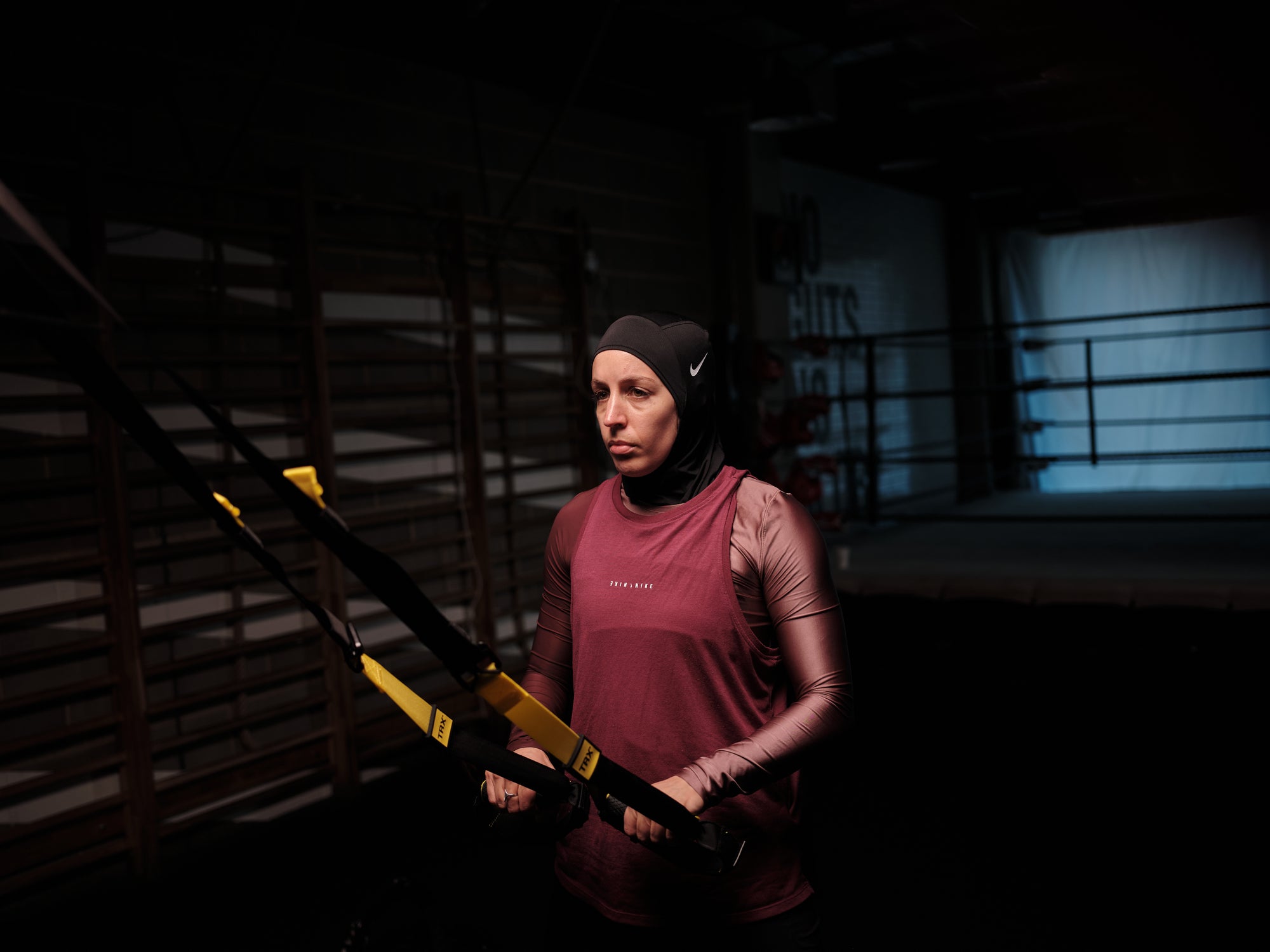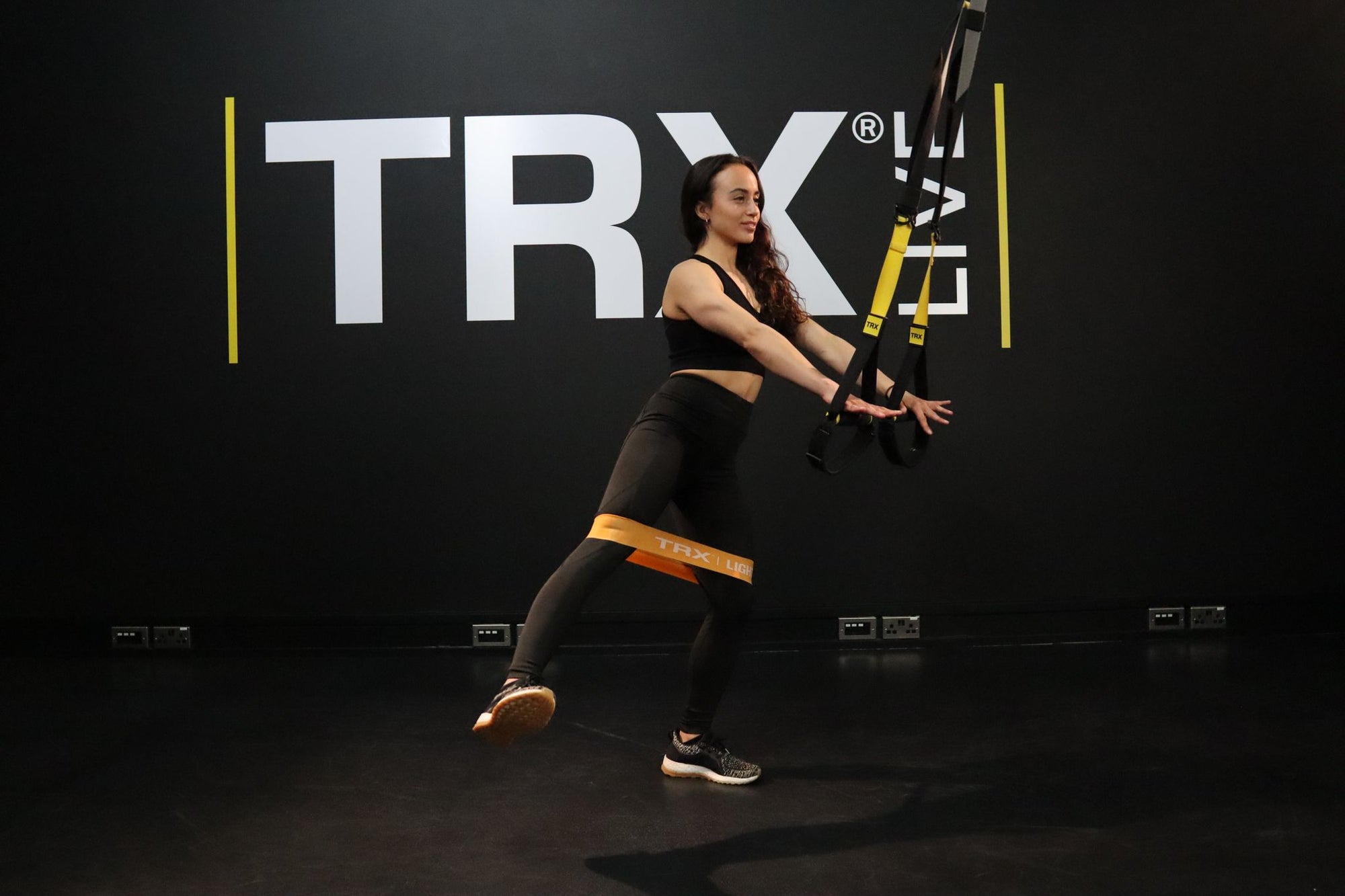News
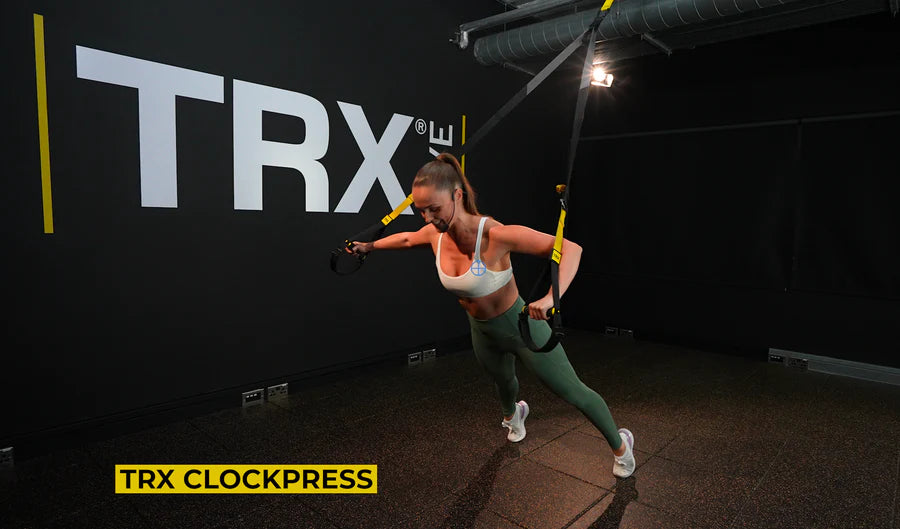
These 3 TRX Moves Are Exclusive To The Straps
These three TRX-exclusive moves are just a few more reasons to appreciate the most versatile fitness tool in the world.
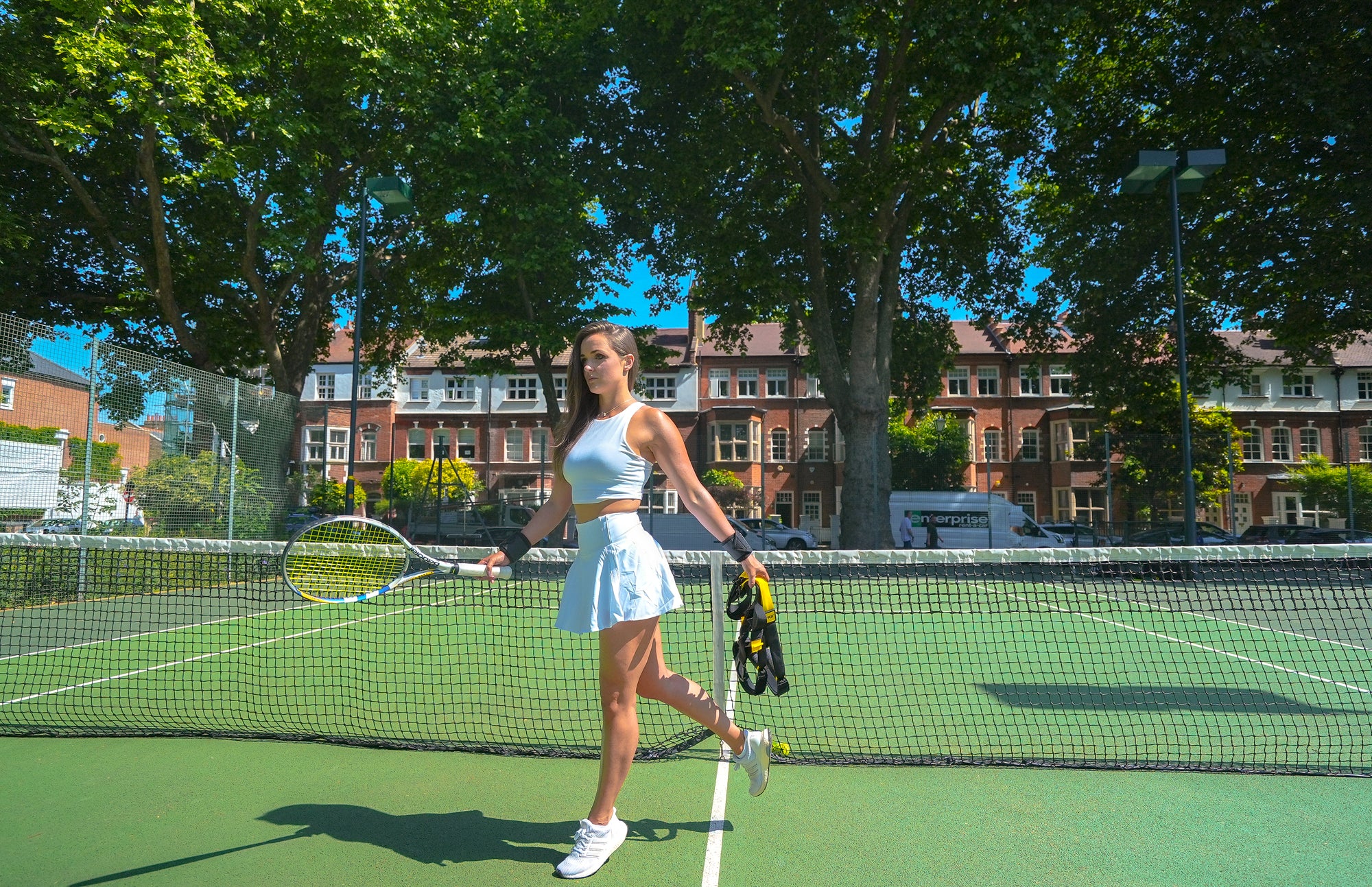
TENNIS
TOP 5 TRX TENNIS EXERCISES TO IMPROVE YOUR GAME
Tennis players must constantly change the speed, direction, and height of their bodies—sometimes with every shot. If you want the power of Rafael Nadal or the athletic conditioning of Serena Williams, grab your TRX Suspension Trainer and start with these 5 TRX Training tennis tips from TRX Training Senior Master Trainer Matt Gleed. Gleed has even included common faults and fixes for each move.
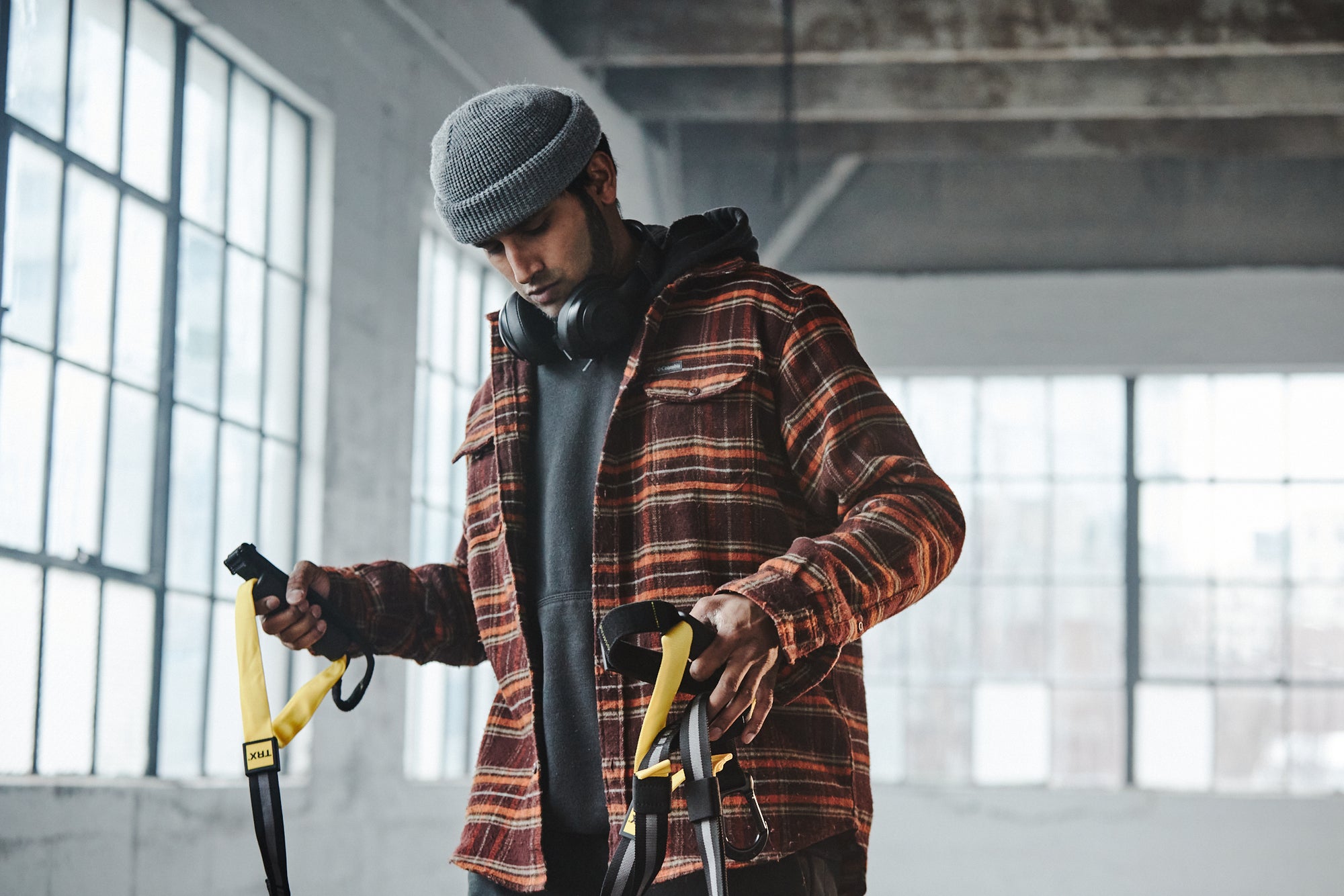
TJ Yale: Movement Is In My DNA
“I'd always dance up and down the grocery aisles,” TJ Yale recalls of his early childhood years in Damascus, Ore. Yale's parents, looking for an outlet for their five-year-old’s creativity and energy, responded by enrolling him in ballet and tap lessons. “I was fortunate to have parents who were able to put me in dance classes,” he said.
TJ thrived in dance, and stuck with it. In middle school, a judge at a competition suggested that TJ’s parents enroll him in a special performing arts school in Portland. He spent the rest of his school years dancing hours each day as part of magnet programs and the Jefferson Dancers—the longest-running dance company in Portland—before continuing on to Los Angeles, New York. and Tokyo after graduation. Today, located back home in Oregon, TJ is a dancer, choreographer, and instructor at the program that helped shape him.
Ballet, tap, jazz, hip hop, African modern: you name it, TJ’s done it. And now, he gets to pass his love of movement to a new generation of dancers.
“It was a good transition. I got to do some commercial work and that sort of thing, but getting to take everything that I've learned from all of my teachers and give back is a pretty cool feeling; especially when you see a kid get really excited about a step, or you see them struggling with something for so long, and they finally get it,” he said.
While dance is an art form, it also requires strength, stamina, and athleticism—much like basketball or soccer. “It should be considered a sport,” TJ said. “You're engaging all these different muscles, and you're using different types of breathing. Not only do you need brute strength in dance, but you need strength that's going to give you longevity. We train our bodies to be able to perform at a peak level, but keep it consistent.”
Cross-training and dance may not be terms automatically associated with one another, but TJ says tools like the TRX Suspension Trainer have helped him create greater stability and improve his overall dance skills. “It made me work muscles that I didn't even realise I had—and I feel like a lot of dancers would say they feel like they have a pretty good understanding of their body,” he said.
With the Suspension Trainer, TJ says his freestyling has improved because he feels more grounded, which helps him move faster and more precisely. “The main thing for me is being able to have more control, because I can more accurately execute [moves], or do them for longer periods of time.”
There are days when TJ questions why he’s stuck with dance for so long, but he’s grateful to be a dancer because it keeps him in great shape. “Dancing at such a young age got me in this subconscious routine of always being active or pushing myself physically.”
Ultimately, TJ says movement matters because it helps him process never-ending changes in the world.
‘Things are constantly evolving and changing. Movement ties into that. It’s in my DNA. It feels good when I move. If I'm feeling frustrated, it's something that I can turn to and just let things out. If I'm still trying to move, that means something's working right internally.”
Check out some of TJ's favourite songs here.
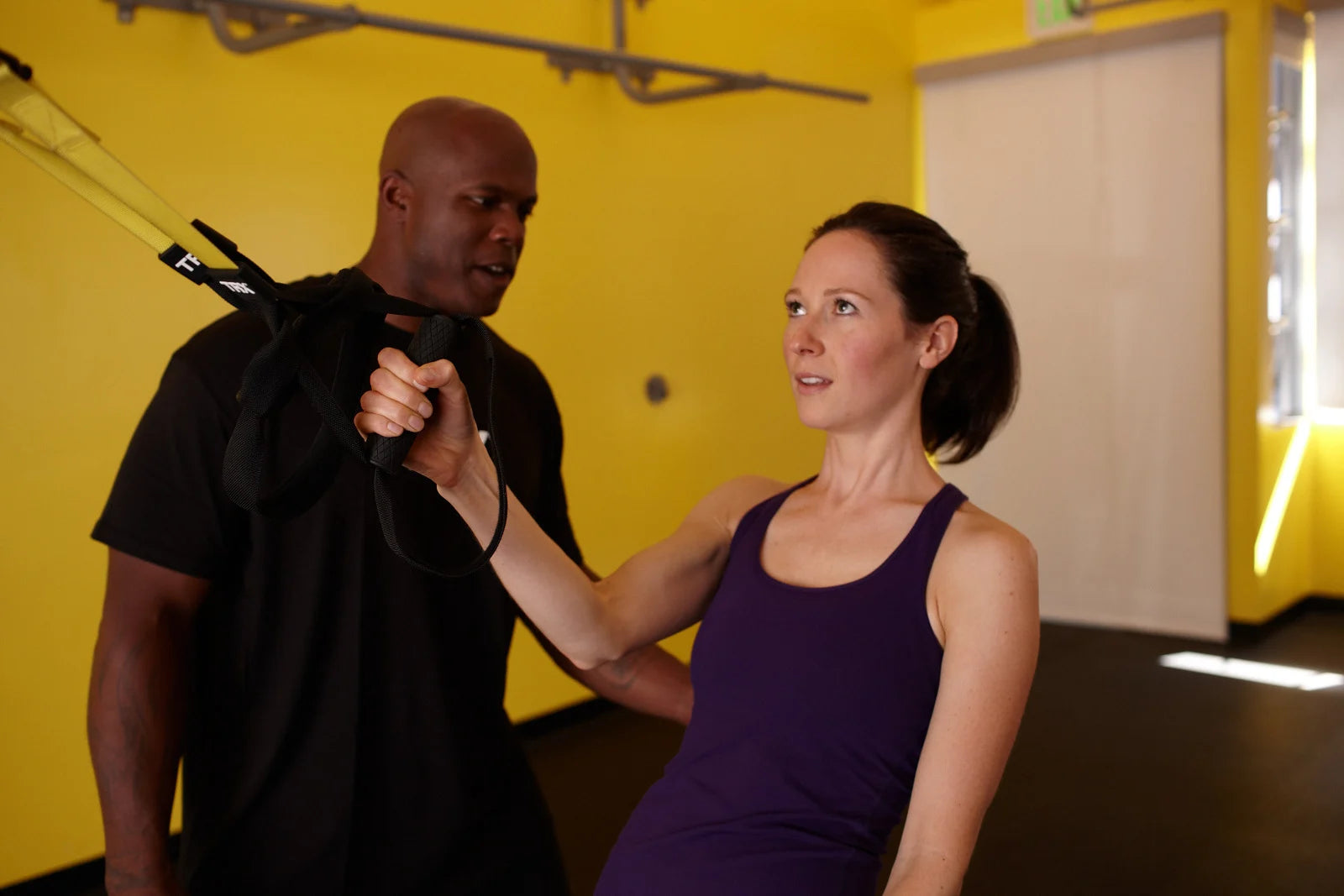
THE VERY BEST TRX MOVES TO IMPROVE BALANCE
Don’t freak out, but your body is not symmetrical...and that’s totally normal! There are tiny differences between the left and right sides of your face, one of your legs is probably a little bit longer than the other, and maybe your shoes have always felt a little more snug on one of your feet. Just as you have physical differences between the two sides of your body, your strength may also vary. While those strength differences could affect your stability in the long run, there are some clever TRX Suspension Trainer moves to help improve balance.
One reason athletes around the world swear by the TRX Suspension Trainer is that it’s an all-core-all-the-time tool. The stabilising loop—that circle at the top of the Suspension Trainer—will slide back and forth if you don’t engage your core, so you have to keep your core tight, no matter what kind of exercise you’re doing. That’s already huge for improving balance, but single-side TRX exercises take it a step further: they also help you identify and correct imbalances.
Most standard TRX exercises—squats, rows, planks, bicep curls, and more—can be modified to isolate a single side of your body. While some people like single-side exercises because they pose a greater challenge, others like them because they reveal which side of your body is stronger.
Let’s use TRX Single Arm Low Rows as an example. Adjust your straps to mid-length, and either thread the handles into single-handle mode, or just grab one handle in your left hand. Set a timer for 30 seconds and count how many reps you can complete before the timer expires. Next, repeat the same 30-second challenge, at the same angle, counting the number of reps you complete on your right side. Were the numbers the same? If you’re left-hand dominant, you probably completed more reps on your left side.
If there was a significant difference in the number of reps, (think three or more), consider adding extra work for your weaker side to create balance between the two sides of your body. You can repeat the same challenge with TRX Single Leg Squats, TRX Single Arm Bicep Curls, TRX Single Leg Planks, and TRX Lunges to help identify strength imbalances through your body. Keep in mind, your dominant hand and dominant leg may be different, so don’t assume that your right leg is stronger just because your right hand is.
If you're feeling ready to go wild with single side exercises, here’s a 20-minute superset workout that targets your upper body, lower body, and core in six-minute segments, with a focus on single-side isolations. We divided this workout into 30-second intervals, so using an interval app like Seconds or Gym Boss—both are available in free versions with in-app purchase options—to keep you on track.
There will be three exercises in each section of this workout. Complete all three exercises on your left side, followed by your right side, and then repeat each side for a second round. You’ll have one minute of recovery between sections.
Upper Body Burnout (x 2)
TRX Single Arm Bicep Curl Left (30 seconds)
TRX Single Arm High Row Left (30 seconds)
TRX Single Arm Power Pull Left (30 seconds)
TRX Single Arm Bicep Curl Right (30 seconds)
TRX Single Arm High Row Right (30 seconds)
TRX Single Arm Power Pull Right (30 seconds)
Lower Body Challenge (x 2)
TRX Single Leg Lunge Left (30 seconds)
TRX Crossing-Balance Lunge Left (30 seconds)
TRX Single-Leg Squat Left (30 seconds)
TRX Single Leg Lunge Right (30 seconds)
TRX Crossing-Balance Lunge Right (30 seconds)
TRX Single-Leg Squat Right (30 seconds)
Complete Core Finale (x 2)
TRX Side Plank Left (30 seconds)
TRX Side Plank + Thread the Needle Left (30 seconds)
TRX Side Plank + Hip Dip Left (30 seconds)
TRX Side Plank Right (30 seconds)
TRX Side Plank + Thread the Needle Right (30 seconds)
TRX Side Plank + Hip Dip Right (30 seconds)
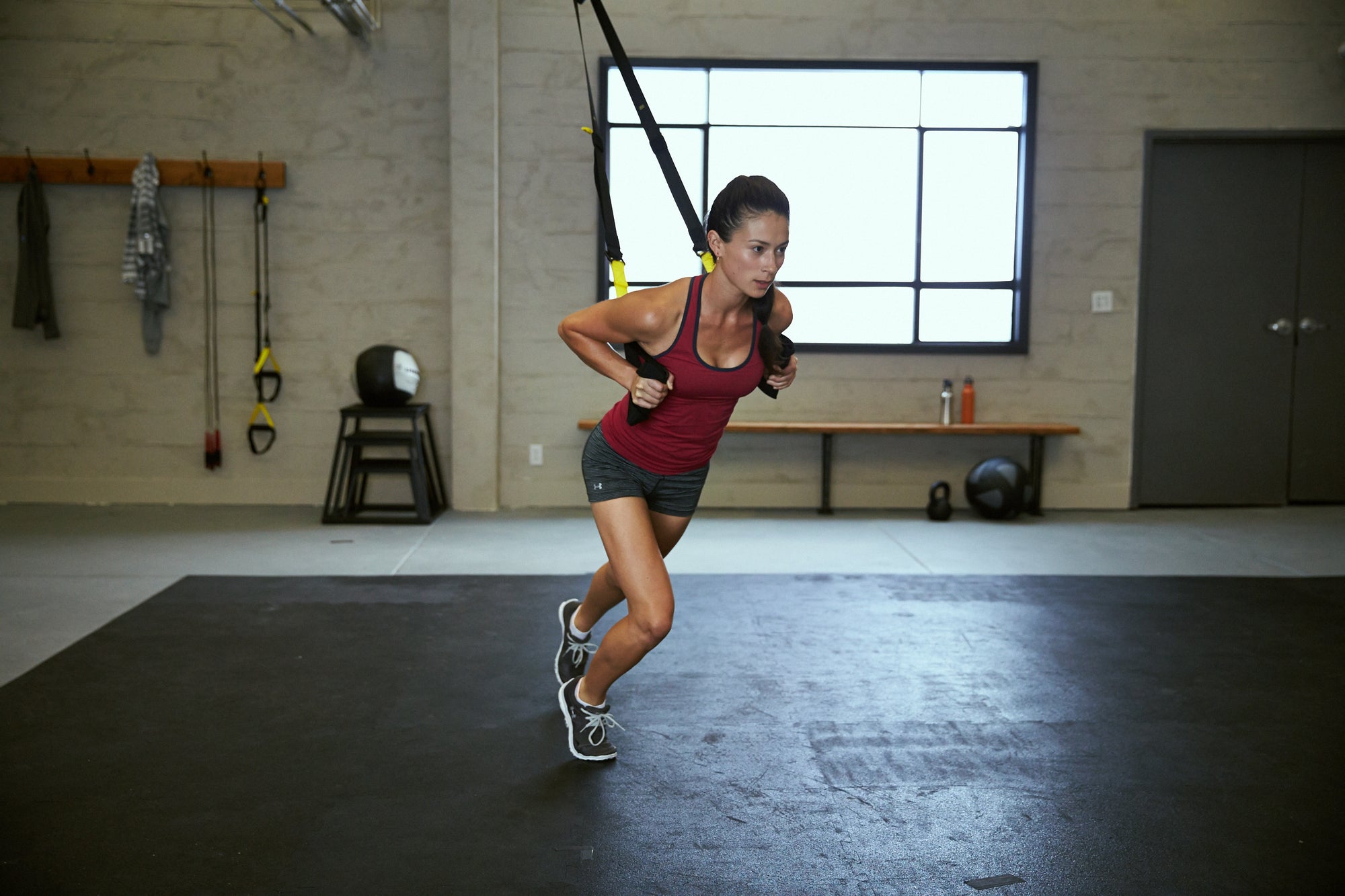
What Is Suspension Training?
Born in the Navy SEALs, Suspension Training bodyweight exercise develops strength, balance, flexibility and core stability simultaneously.It requires the use of the TRX Suspension Trainer, a highly portable performance training tool that leverages gravity and the user’s body weight to complete 100s of exercises.
Workout Using the Suspension Trainer
The TRX Suspension Trainer is the original, best-in-class workout system that leverages gravity and your bodyweight to perform hundreds of exercises.
You're in control of how much you want to challenge yourself on each exercise - because you can simply adjust your body position to add or decrease resistance.The TRX Suspension Trainer:
Delivers a fast, effective total-body workout
Helps build a rock-solid core
Increases muscular endurance
Benefits people of all fitness levels (pro athletes to seniors)
Can be set-up anywhere (gym, home, hotel or outside)
By utilizing your own bodyweight, the TRX Suspension Trainer provides greater performance and functionality than large exercise machines costing thousands of dollars.
Used By Trainers, Athletes and the MilitaryThousands of people at all fitness levels now train on the TRX: From everyday people who just want to feel and look their best to some of the world's most elite athletes. The TRX is used routinely by all four branches of the military, and can be found in the locker rooms of:
Major League Baseball teams
Football Players
Tennis Players
Golf Professionals
UFC fighters
Olympic-level cyclists, swimmers & runner
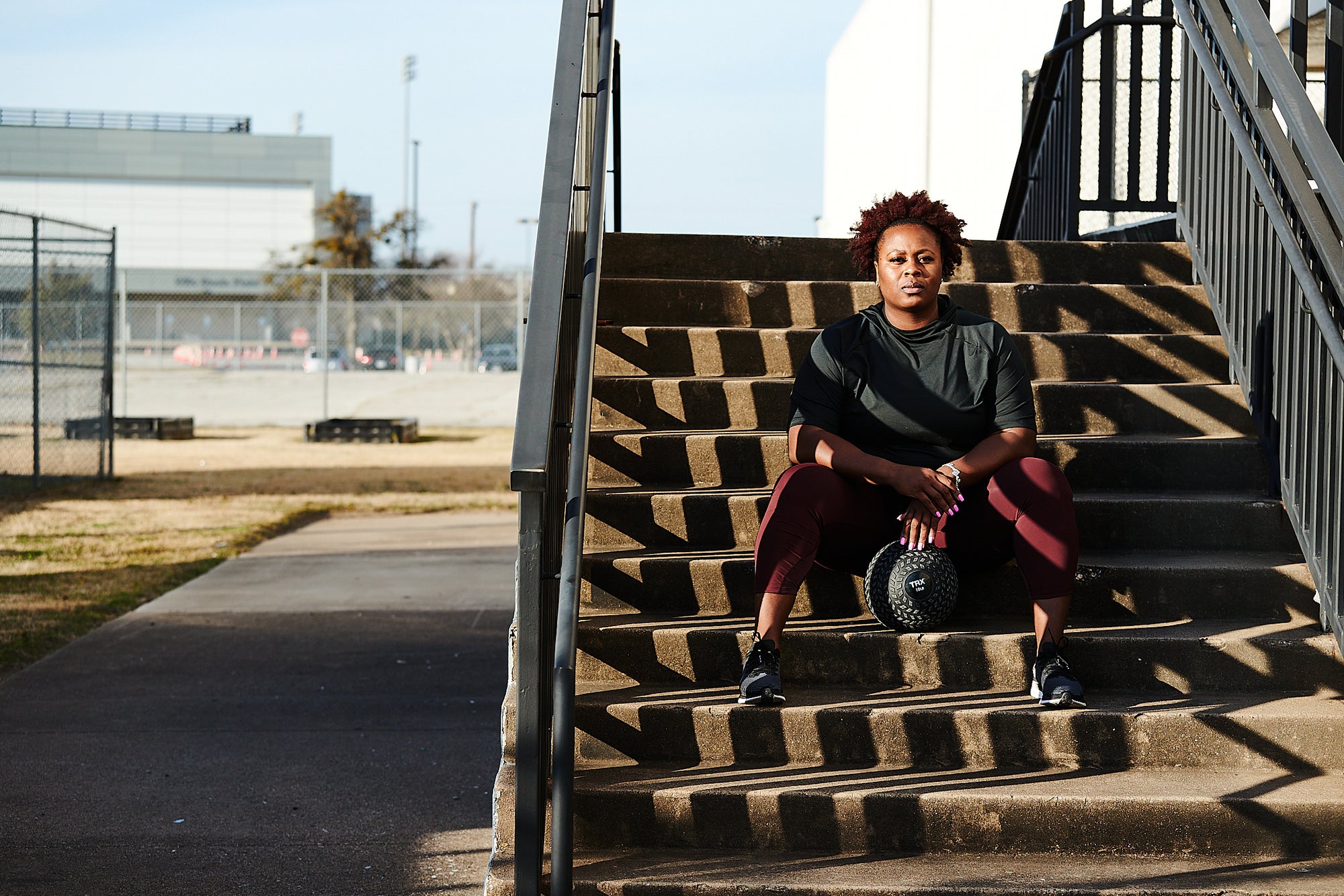
Olympic ‘Shot Diva’ Michelle Carter: Our Bodies Are Made to Move
Michelle Carter is an Olympic gold medalist. An American record holder. A Nike-sponsored athlete. She’s the first American woman to earn gold in shot put—she won in Rio in 2016—and only the second to medal in the sport. So it’s surprising that she has a story about her high school coach singling her out on the track and field team.
“I was always last,” Michelle said, reflecting on running in high school. “I was last on purpose. So the coach was like, ‘If Michelle wins—if she beats everybody—we're done.’ She just knew that I wasn't going to beat the fastest girl on the team. But when I took off, I was half a court ahead of everybody. I can run. Don't underestimate me.”
Michelle loves a challenge.
She’s also proof that athletes don’t fit into a single mould.
She hates running, but she’s a three-time track and field Olympian. She’s spent most of her life competing in a sport frequently associated with the term “brute strength,” but she’s known as the Shot Diva. (Michelle is also a professional makeup artist, and she does not forego the glam for competition.) She gives young athletes pointers on form, and she donates the food and supplies they need to compete at the highest level.
Shot put glory runs in the Carter family, though Michelle didn’t learn that until she gravitated to the sport in middle school. Her father and coach, Michael, won silver in shot put at the 1984 Olympics, but Michelle grew up thinking of him as a three-time Super Bowl-winning nose tackle. “My dad never brought it up because he didn't want us to pick [a sport] because of what he did.”
Unaware of the family legacy, Michelle was drawn to the athleticism of shot put. “I could use all of who and what I am. In a lot of different sports, especially when you're a different-sized athlete, people tell you what you can and cannot do. They kind of limit you and put you in a box.”
That’s a pattern Michelle is trying to break both through the example she sets as an Olympic athlete, and her charitable work through her non-profit organisation, One Golden Shot, which supports young athletes.
“Moving to me is important because I feel like that's what the human body is made for. We are made to move. We're made to go for a walk and just try different things with our bodies because our bodies enjoy it,” Michelle said.
But movement and sports among school-age athletes isn’t just a matter of picking up a ball or lacing up sneakers. Many kids lack the necessary fuel, equipment, supplies and mentorship to excel in sports. Michelle is filling that void.
Michelle’s You Throw Girl Scholarship Fund provides female athletes in sixth through twelfth grades with camp tuition scholarships to attend her You Throw Girl Sports Confidence Camp. Through Fuel Up, Michelle is providing track teams in the Dallas/Fort Worth Area with healthy meals and snacks for competition day. And through I'm Supported, Michelle is supplying female athletes with proper sports bras and feminine hygiene products like pads for days when they’re caught off guard.
In addition to her work supporting young athletes in their pursuit of movement—and running her business and philanthropy efforts—Michelle is also preparing for the Tokyo Olympic games. Training as a world-class athlete during a pandemic isn’t easy, but Michelle has made it work by adding a small gym in her home.
“I never wanted a home gym,” she admits. “I want to go to the gym. And then this happens and I'm like, ‘Oh man, like I'm stuck like Chuck. What am I going to do?’ So I had to figure it out and find things and try to build up something.”
As she prepares for what will hopefully be her fourth Olympic appearance, Michelle is focused on weightlifting, agility, and plyometrics. Her physical therapist introduced the TRX Suspension Trainer into her routine, and Michelle uses it for warmups, shoulder exercises and stability exercises.
“I'm feeling pretty good. Whatever happens this year is what's supposed to happen, and that's how I really approach every year. I look at it as these are just moments that are gonna test me. How bad do I really want it? Am I going to keep pushing for it?” she said.
Like most of us, Michelle says she’s been mentally and physically stretched over the last year, but the slower pace of 2020 and 2021 have allowed her an opportunity for reflection on her life in general and her career as an athlete. Regardless of whether she adds another gold to her collection this year, Michelle will never stop moving or encouraging other people to find their power through movement.
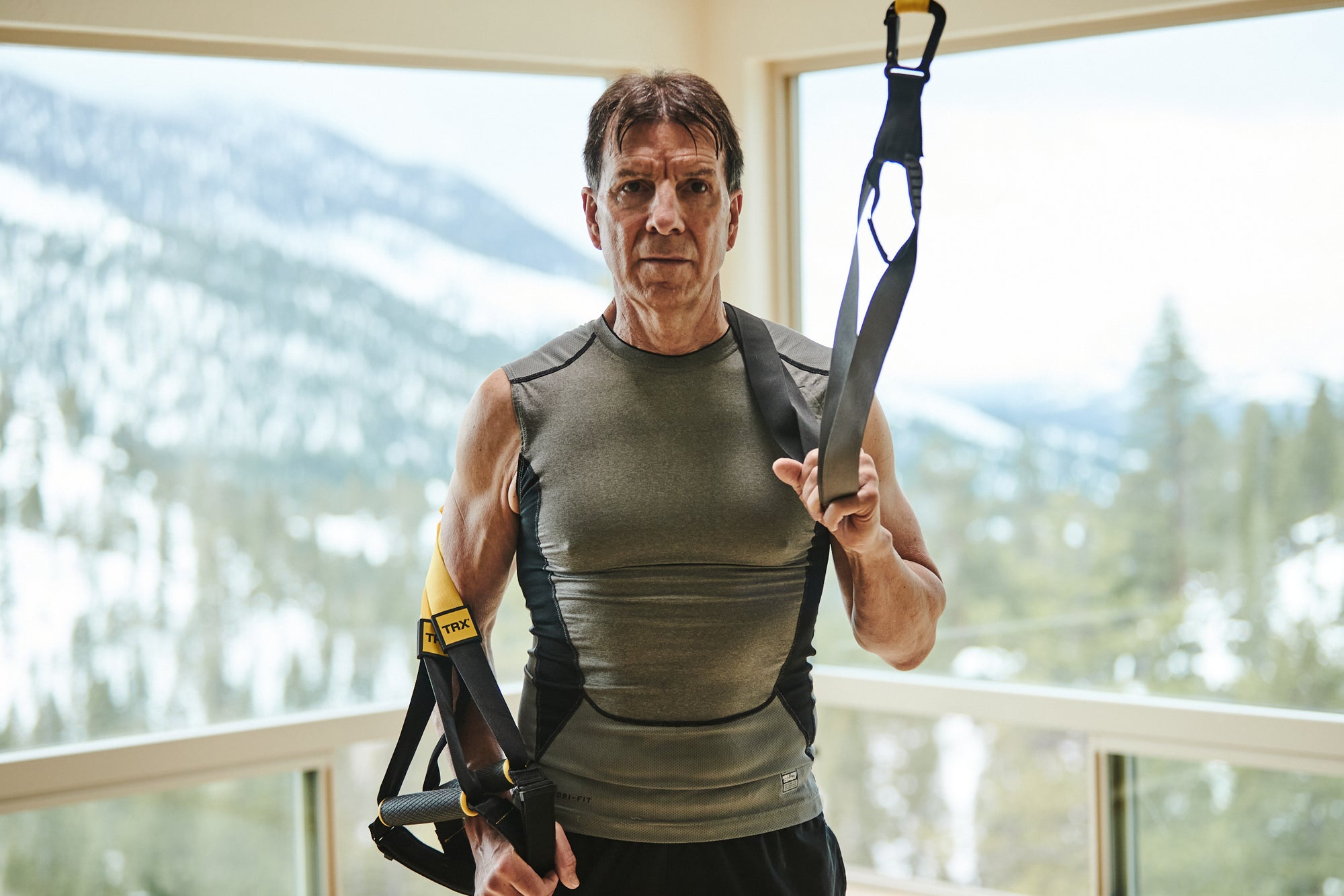
How Walt Raineri Embraced Movement to Adapt to Blindness
Imagine, for a moment, that you’ve got it all. Fancy career, fast cars, prestige—all the things you’re told hard work can bring. And then, everything goes dark. Literally. What would you do? For Walt Raineri, there was only one option: adapt, get moving, and make the best of things.
As Walt tells it, he was zipping along the highway of life when the guillotine fell on his eyesight. The culprit was retinitis pigmentosa, a hereditary, degenerative eye disease. “I knew I was going to go blind,” Walt said. But knowing blindness was inevitable couldn’t prepare him for how he would emotionally respond to becoming visually impaired.
When his vision began to fade, Walt committed himself to mobility training. He was doing everything a visually-impaired person should do when he stumbled on a rock while walking with his cane through a busy intersection. He fell to the street, and was overwhelmed by frustration.
“I just lied there, face down, thinking to myself, ‘Wow, I did everything right. And it's still not enough. Is this going to be the rest of my life, doing everything right and not being able to function properly?”
In that lowest moment, when the light changed and cars began honking, Walt—still lying in the intersection—made a choice. “It was right then that I experienced this tipping point in my life,” he said. “It was that second that I began the mindset of ‘stop trying to be a poorly functioning sighted person and start being a highly functioning blind person.’ And from that moment, everything started to get easier.”
His mindset may have gotten “easier,” but the challenges grew harder. Walt had been an athlete growing up, and had a post-workday workout routine before losing his sight. After, he threw himself into sports—sailing, rowing, skiing, rock-climbing, cycling—as a means of coping with blindness. Losing his vision made the world feel smaller; challenging himself through sports made it bigger again.
While there may be modifications to the way Walt participates in these sports, they are by no means simplified. In sailing and skiing, for example, there are sound beacons that let Walt know where the obstacles are. Walt has some ski trails memorized, but he largely listens for other people to avoid crashing. The dangers and challenges presented by each sport remain very real. That’s something that he says many sighted people take for granted.
Walt recalls skiing solo in Colorado when another skier recognized him as a legend on the mountain—the blind skier who had memorized all the trails. Walt assured him that he didn’t have all the trails memorized and suggested they try out one of the trails he was less familiar with.
“The thing about Nordic skiing is you have to be able to ski well uphill, and that's quite challenging. So we're about halfway through the ski, and he had really forgotten at all that I was blind. He was struggling to keep up with me… I got him to transition from it being a charity event to a holy-smokes-how-do-I-keep-up-with-my-friend event? That's really part of the fun of it: being able to demonstrate to people that you are relevant, that you can add something to the equation and that doing things together can sometimes be even more empowering.”
For Walt, sports have blasted out the walls that blindness built around him, but he knows that many visually-impaired people are still trapped by the frustration that can accompany blindness.
“The feeling of claustrophobia is real, it's tangible; it often results in a lot of sedentary behaviour by visually impaired individuals. I found that this concept of moving at the speed of nature—getting out and doing things, engaging in activities—helped me with this sensation of pushing the walls out,” Walt said. “It's a matter of adaptation. It's a matter of understanding that, in any given moment, you can bring your skillset to the table. What you do with it is critically important because you can't prepare for everything.”
That tendency to embrace adaptation is also what drew Walt to the TRX Suspension Trainer. He took his first TRX class while on vacation in Mammoth in 2009, and immediately knew that he wanted his own straps at home.
“It was quite revolutionary for me to experience the intensity of a workout without using any weights, because I was very familiar with weight room activities—using weights or cables connected to weights—to work out. It was so fun to experience that you could achieve that with so little equipment; that with understanding the dynamics of how you can get your body to work against itself using this Suspension Training system, you can achieve the [same] level of intensity and muscle development. From that early beginning, it just worked its way into my routine on a pretty regular basis.”
Walt has been using his TRX Suspension Trainer for more than a decade, and he’s been so impressed by the opportunities it offers the visually-impaired that he reached out to TRX founder Randy Hetrick about creating TRX programming specifically for visually-impaired people.
“You have to integrate some kind of fitness into the life of a visually-impaired individual… I came up with this idea of creating a group of ambassadors, and [reaching] out to the visually-impaired community—not only the people who are visually-impaired, but their caregivers, families, supporters, and friends—to let them know that this isn't a reason to stop; there's equipment that is very affordable, that you can use wherever, whenever to stay fit,” Walt said.

